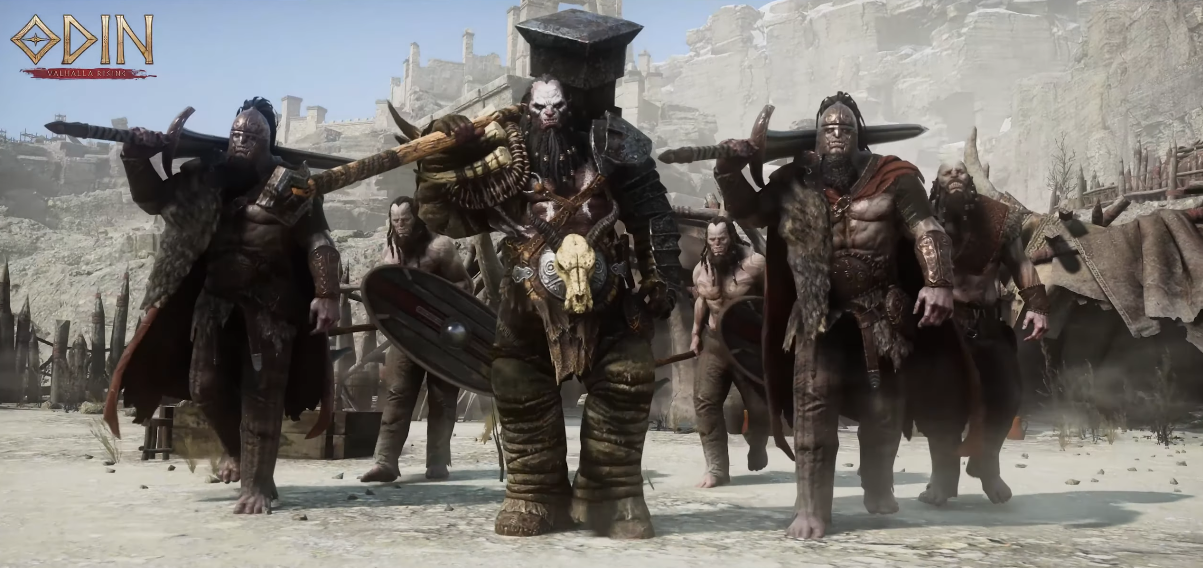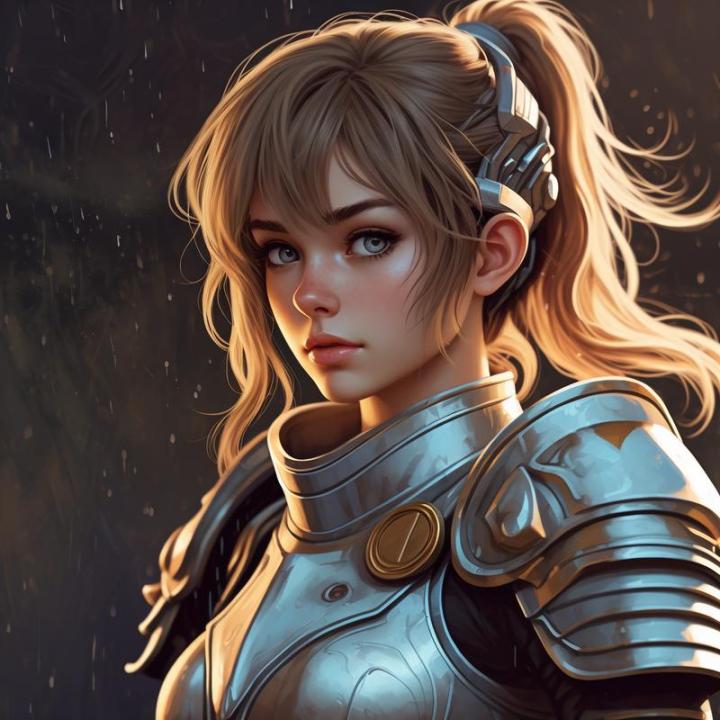Notifications

12 minutes, 11 seconds
-7 Views 0 Comments 0 Likes 0 Reviews

In a gaming landscape increasingly dominated by trend-chasing aesthetics and mythological name-dropping, Odin Diamonds emerges not just as an outlier—but as a testament to what can be achieved when a developer commits fully to the world it’s trying to bring to life. Rather than borrowing from Norse mythology for surface-level flavor, Odin: Valhalla Rising builds its very DNA from mythic foundations. Developed by Lionheart Studio and published by Kakao Games, this MMORPG doesn’t just feature myth—it embodies it.
Where so many modern online titles reduce ancient mythos to glorified skin packs or themed battle passes, Odin dares to be something else: reverent, immersive, and unapologetically myth-soaked. From the icy reaches of Jotunheim to the golden grandeur of Asgard, every frame of this game feels sculpted from the sagas. And it isn’t just in the environments—though they are jaw-dropping—it’s in the way the world breathes, how quests unfold, and how conflict carries existential weight rather than feeling like a mechanical treadmill of fetch tasks.
A Living, Breathing Myth
At its heart, Odin: Valhalla Rising is a story-driven MMORPG that doesn’t force its narrative through static cutscenes or bloated exposition. Instead, it lets its world speak. The terrain tells of ancient wars; crumbling ruins hint at lost wisdom; the wind howls like a grieving Valkyrie, and the rivers run red with the echoes of forgotten oaths. Every environment isn't just a level to pass through—it’s a page in an epic that never truly ends.
This ambient storytelling is where Odin excels. The game doesn’t need to constantly remind you that you’re playing a Norse-themed title because everything from the architecture to the weather systems to the regional fauna feels pulled directly from myth. Even the enemy design leans deeply into a blend of folkloric grotesquery and apocalyptic dread, blending traditional Viking imagery with unsettling eldritch elements. It’s Norse mythology filtered through both reverence and reinvention.
World-Building With Teeth
One of the standout features of Odin is the integrity of its world-building. Unlike games that silo their lore into inaccessible codices or forgettable NPC monologues, Odin integrates its mythology into gameplay mechanics. The Nine Realms aren’t just zones—they’re philosophical opposites, each reflecting the values, sins, and aspirations of their inhabitants. Midgard teems with mortal strife and ambition, while Niflheim oozes desolation and decay. This thematic consistency gives every quest and dungeon a sense of place and purpose.
Lionheart Studio’s world design does something rare in MMORPGs: it encourages players to explore slowly. There’s an almost painterly attention to detail in the topography. Mountains don’t just serve as barriers—they feel ancient, carved by gods or cursed by titans. Forests aren’t just lush—they're haunted, teeming with whispers and illusions. This isn't just open-world design; it's open-myth design.
Combat as Ritual
Combat in Odin: Valhalla Rising is more than a mechanical loop—it’s ritualistic. Fights feel like ceremonial dances of steel and blood. The animations are fluid and impactful, grounded in realistic physics but with enough flourish to feel suitably divine. Each class feels distinct and steeped in lore. You’re not just playing a "warrior"; you’re embodying a Berserker touched by the fury of Fenrir. You're not a “mage,” but a Rune Caster channelling eldritch forces rooted in the World Tree.
What’s more compelling is how the game blends cinematic presentation with mechanical depth. Boss encounters aren’t just DPS checks—they’re mythic set-pieces, pitting players against beings that feel genuinely legendary. You’re not just farming a giant for loot; you’re reenacting ancient battles written in the stars.
This is also where the game diverges from the traditional MMO reliance on gear grinds. While loot and progression systems exist, they are framed through a more narratively-driven lens. You don’t just equip a powerful item—you inherit a legacy. Gear is imbued with the essence of slain gods or the magic of cursed bloodlines. There’s history in the inventory screen, and that elevates the whole experience.
Aesthetic as Atmosphere, Not Decoration
Visually, Odin: Valhalla Rising is stunning, but its beauty isn’t hollow. Powered by Unreal Engine 4, the game’s graphics blend high-fidelity realism with stylized mythological grandeur. Sunlight filtering through frost-bitten trees, the aurora dancing above sacred shrines, ash drifting over battlefields—every frame contributes to an overwhelming sense of mood and tone.
But beyond its fidelity, what sets Odin apart is how it uses art direction to reinforce its themes. Color palettes shift depending on region and narrative tension. Character designs feel carved from myth and stained with tragedy. Even the UI is clean and immersive, avoiding intrusive HUD elements that might break the spell.
The soundtrack, too, deserves special praise. With a score that oscillates between somber orchestral dirges and soaring anthems, the audio design never lets you forget the scale of your journey. Every area has its own musical identity, and together, they compose an audio saga that matches the gravitas of the visuals.
Myth as Mechanic
It’s rare to see a game treat myth as more than window dressing. In Odin: Valhalla Rising, myth is mechanic. The world is governed by prophecies and divine cycles. Day and night have consequences beyond lighting changes. World events feel like cosmic alignments rather than random spawns. There’s a persistent sense that the gods are watching—or worse, have abandoned you entirely.
This philosophical weight bleeds into the narrative arcs. Player choices, though limited in traditional dialogue trees, still carry emotional resonance. Helping a minor NPC reclaim a relic isn’t just a side quest—it’s part of a sacred rite. Every death feels significant, every victory Pyrrhic. The game rarely offers clean triumphs. Instead, it leans into the tragic fatalism of Norse lore: even the mightiest fall.
And then there’s Ragnarök—the ever-looming apocalypse. Unlike other games that treat their end-of-the-world stories as climaxes to be patched in, Odin starts with that doom already encroaching. It’s not a twist; it’s the premise. And that gives every action an urgency and melancholy that’s deeply evocative.
Multiplayer That Feels Like Community
MMORPGs live and die by their communities, and Odin takes this to heart. There’s a robust guild system, but beyond raids and resource-sharing, the game fosters real social interaction. Players can form Viking clans, which aren’t just guilds in name but have territorial, cultural, and narrative identities.
World bosses, PvP zones, and large-scale events feel less like routine grinds and more like modern reimaginings of ancient tribal warfare. When you march alongside your clan toward a Jotunn encampment, it doesn’t feel like a raid—it feels like myth in motion.
The game’s community tools, voice integration, and player economy are all designed to reinforce this idea of a shared mythic journey. You’re not just progressing individually; you’re shaping a communal saga.
Challenges and Criticism
No game is perfect, and Odin is no exception. Its launch was rocky in certain regions, with some players citing server instability and UI clutter during peak times. The monetization model, which leans into mobile-style systems, has also raised eyebrows, particularly with gacha mechanics tied to character progression and cosmetics.
There’s a tension between its immersive narrative ambitions and the grindier aspects of its MMO backbone. While Odin aspires to myth, it occasionally stumbles into repetition. And though its story beats are evocative, they can be spaced too far apart for some players seeking tighter pacing.
That said, Lionheart Studio has shown a consistent willingness to patch and evolve. The community’s voice is being heard, and improvements continue to roll out.
Final Verdict: A Myth Worth Living
Odin: Valhalla Rising isn’t just another MMORPG wrapped in Viking iconography. It’s a bold, atmospheric, and at times profound reimagining of what a mythological game can be. It dares to be slow, to be weighty, to build a world where every tree and stone has a tale to tell.
For players weary of fantasy worlds that feel too polished, too safe, or too disconnected from their source material, Odin offers something different: a world that remembers cheap Odin Valhalla Rising Diamonds. A world that bleeds. A world that sings.
You don’t just play Odin: Valhalla Rising.

